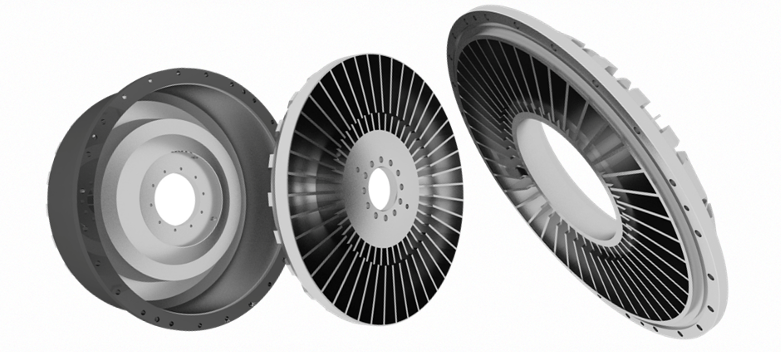Hydrodynamic Couplings Minimize Maintenance in Heavy-Duty Drives
Industrial ore operations require heavy-duty, specialized equipment to successfully transport bulk materials like raw ore. To maximize throughput, the machinery must remain operational in extremely harsh environments. However, even machines and components that are designed for these conditions will eventually break down, making it important to design them with minimal maintenance requirements. Hydrodynamic couplings are ideal for bulk material handling applications like mineral production because they minimize the time, effort and costs required to maintain equipment drives.
In addition to the harsh environment, ore-handling equipment must perform well — even when manipulating heavy weights. Overcoming the inertia of these material loads, along with the weight of the equipment itself, is no easy task. As a result, most drive systems feature multiple electric motors to facilitate startup. However, quick starts in these conditions can cause overheating and huge shocks to the system. Again, hydrodynamic couplings rise to the occasion.
All About Hydrodynamic Couplings
A hydrodynamic coupling consists of two bladed rotors — pump rotor and turbine rotor. The pump rotor is connected to the input shaft, and the turbine rotor is connected to the output. These two rotors are assembled within a shell, forming a chamber that contains a fluid like mineral oil or water. The operating concept behind a hydrodynamic coupling is the Föttinger principle, in which power is transmitted via a fluid to drive an output shaft even while both input and output remain mechanically separate.
Since there is no mechanical contact between the motor and gearbox, the electric motor is not subjected to the load of the driven machine. Not only does this feature increase equipment longevity, incorporating a hydrodynamic coupling also reduces the startup current and saves energy.
Most motors will apply maximum torque on startup in order to manipulate such heavy loads, leading many engineers to over-dimension motors. Because hydrodynamic couplings apply a smooth acceleration, motors can be dimensioned based on the power requirements.
In addition, hydrodynamic couplings limit the maximum torque applied, protecting the motor and driven machines. These couplings also provide overload protection because the turbine rotor is allowed to completely slip when overloaded.
Here are some other advantages of hydrodynamic couplings:
- Overheat protection
- Wear-free power transmission
- High efficiency
Henfel’s HENFLUID NG hydrodynamic coupling provides excellent performance, reducing the wear of heavy-duty drives in bulk material handling applications. Its specialized design allows it to be radially assembled and disassembled, decreasing downtime when performing maintenance.
Learn more on the product page.

